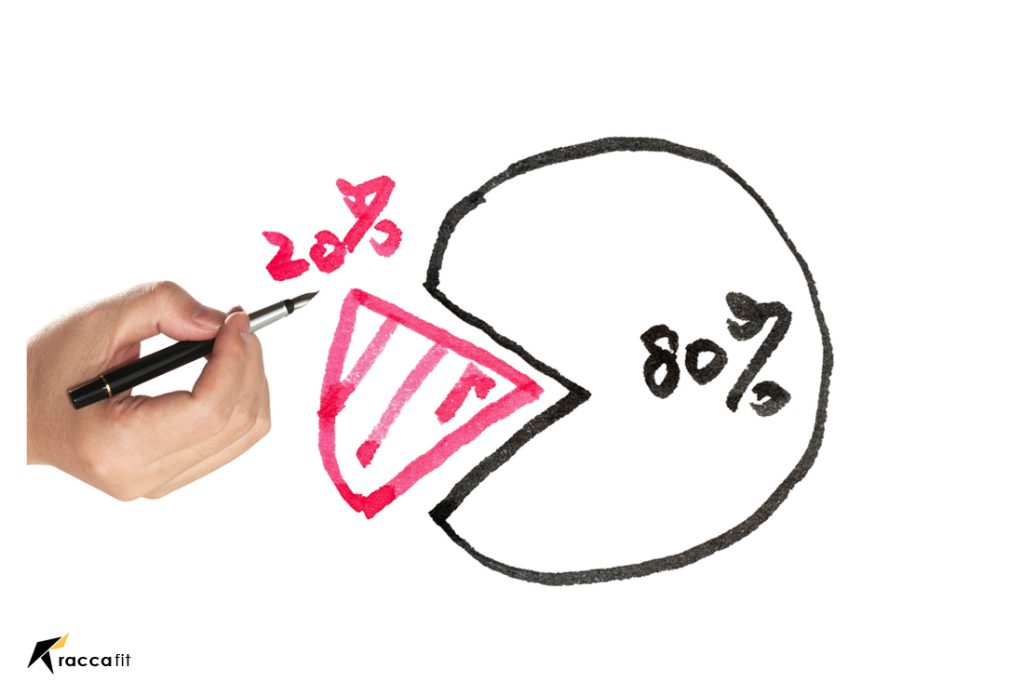it is said exercising with a bad diet will take you no where. While this adage has some merit, you may be wondering whether diet or exercise is more important for your health goals, such as weight loss or improved heart health. With a never-ending list of health interventions, from the 80/20 rule to sedentary diets, it can be difficult to decide whether diet or exercise should be your priority, or if there’s an answer in between. In this article, learn the benefits of exercise and diet and which is more important for your health.
Weight loss
To lose weight, you must be in a calorie deficit. That means your body is burning more calories than it is burning. This can be achieved by eating and drinking less calories, burning more calories through physical activity, or a combination of both.
Advantages of a proper diet
Both diet and exercise are important for weight loss, but it is generally easier to change your diet and control your calorie intake than it is to burn significantly more calories through exercise. This may be why the 80/20 rule has become popular, stating that weight loss is the result of 80% diet and 20% exercise. For example, if you’re aiming for a 500-calorie deficit per day, you can cut 400 calories (80%) by eating lower-calorie meals, smaller portions, and snacks. All that’s left is to burn 100 calories (20%) through exercise. For many people, this is easier than trying to burn him 500 calories a day with exercise. Burning a lot of calories each day requires a fair amount of exercise. Plus, it’s time-consuming, taxing on the body, and rarely sustainable.
Here we can provide you with a plan customized to meet your exact nutritional needs, keep an eye for any food allergies, and create a meal plan no matter the dietary requirement but to explain more and put this into perspective, a person who weighs 70 kg needs to pedal for 1 hour with moderate intensity on a stationary bike to burn 525 calories. Meanwhile, they saved 520 calories by skipping the Starbucks Venti Green Tea Frappuccino. A simple way to control your calorie intake and promote weight loss without counting calories is as follows. To focus on eating whole, minimally processed foods that are high in fiber, protein, and healthy fats.

Advantages of a proper exercise
There are many ways exercise can support weight loss. Strength training helps maintain and build muscle mass. This increases your metabolism over time, allowing your body to burn more calories even at rest. Plus, a single strength training session can boost your metabolic rate for up to 72 hours. Aerobic exercise, such as walking, jogging, and cycling, can burn a significant number of calories per session and contribute to calorie deficit, especially if done at low to moderate intensity for 30 minutes or more. Regular exercise also helps control hunger by regulating hunger hormones. This helps prevent overeating and snacking. That said, overtraining can increase your appetite and increase your risk of injury, so it’s best to do it in moderation. Finally, regular physical activity that burns extra calories and boosts your metabolic rate can make your diet more flexible, making weight loss more enjoyable and less restrictive.
a combination of both diet and exercise
The 80/20 rule is a useful guideline, but it doesn’t have to be strictly followed. Instead, focus on making positive changes to your diet and exercise program that work for you. The key to healthy long-term weight loss and weight management is diet and the use of exercise. In fact, one review showed that moderate calorie restriction combined with exercise was the best way to achieve significant weight loss. Another review found that weight loss programs that included both dietary and exercise components are better. They yielded greater weight loss outcomes than dietary changes or exercise alone. Ultimately, dietary changes combined with regular exercise can help you achieve more meaningful and sustainable weight loss over the long term.

The Foundation of the 80/20 Rule
The premise of the 80/20 rule suggests that a significant portion of weight loss, health improvement, or fitness attainment is attributed to dietary choices, constituting 80%, while the remaining 20% is ascribed to physical exercise. As we embark on this exploration, it’s crucial to understand the rationale behind this distribution and its implications for individuals striving to optimize their well-being.
The Easier Path: Controlling Calories through Diet
One facet of the 80/20 rule asserts that altering one’s diet is generally more manageable and effective in controlling calorie intake than relying solely on exercise. The section delves into the practicality of this assertion, examining how modifying dietary habits, such as consuming lower-calorie meals, managing portion sizes, and choosing nutrient-dense snacks, can lead to a caloric deficit.
Exercise Efficiency: Balancing the Equation
While diet takes the spotlight in the 80/20 rule, the importance of exercise is not to be underestimated. We explore how regular physical activity, encompassing both strength training and aerobic exercises, contributes to weight loss and overall health. Highlighting the efficiency of exercise in burning calories, building muscle mass, and boosting metabolism, we aim to elucidate its role in the 80/20 equation.
Real-world Scenarios: Navigating the 80/20 Rule
This section delves into practical scenarios where individuals have successfully navigated the delicate balance between diet and exercise to achieve their health goals. We examine case studies, testimonials, and expert opinions to provide a comprehensive view of how the 80/20 rule manifests in real-life situations.
Flexibility in Application: Beyond Rigidity
As we unravel the layers of the 80/20 rule, we question its rigidity and explore whether it’s a steadfast guideline or a flexible concept. Can individuals customize the ratio to better suit their unique circumstances and preferences? This segment encourages readers to consider personalizing their approach based on lifestyle, preferences, and individual responses to diet and exercise.
Charting Your Course: Crafting a Personalized Strategy
The journey to optimal health is highly individualized. In this section, we provide practical tips and insights for readers to craft a personalized strategy that aligns with their goals. Whether emphasizing diet, exercise, or finding a harmonious blend of both, readers will gain actionable insights to embark on a journey tailored to their unique needs.
In the quest to unravel the mysteries of the 80/20 rule, we aim to equip readers with a nuanced understanding of the interplay between diet dominance and exercise efficiency. Through comprehensive insights, practical scenarios, and personalized strategies, this exploration endeavors to empower individuals on their path to a healthier and more balanced lifestyle.
Heart Health

Advantages of a proper diet
The foods we eat can help or hinder heart health. Dietary patterns associated with a reduced risk of heart disease focus on minimally processed vegetables, fruits, whole grains, healthy fats, and lean animal and plant proteins, but not sodium. are also lower.
For example, a well-established Mediterranean diet promotes heart health. Healthy unsaturated fats from olive oil, fish and nuts, fiber from whole grains and vegetables, and rich in antioxidants that help fight harmful molecules called free radicals). Plus, because it focuses on fresh, minimally processed foods, it contains limited amounts of saturated fat and added sugars. The Diet to Stop Hypertension diet is another evidence-based eating style similar to the Mediterranean diet. Prioritizing minimally processed foods such as vegetables, fruits, and whole grains can help reduce sodium and increase potassium and fiber.
Advantages of a proper exercise
Numerous studies have shown that exercise can help reduce the risk of heart disease. Additionally, lower blood pressure and LDL (bad) cholesterol, increase heart size and strength, and improve cardiorespiratory fitness. Even if you haven’t lost weight, you can still see these benefits with regular exercise. Moderate to high-intensity aerobic exercise strengthens the heart, allowing it to pump more blood through the body with each beat. This puts less strain on the heart and arteries, reducing the risk of heart disease.
Additionally, regular exercise may reduce the risk of developing type 2 diabetes. That is strongly associated with heart disease, by improving insulin sensitivity and blood sugar control. General recommendations include 150 minutes of moderate-intensity exercise. Plus, 75 minutes of vigorous-intensity exercise or a combination of the two each week for optimal heart health. Even low-intensity aerobic exercise, such as walking, can reduce the risk of heart disease. If you have heart disease or other chronic medical conditions, consult your doctor before starting a new exercise program. also, we can help you to build a workout plan tailored to your goals, preferences, schedule, and available equipment in this page.
A combination of diet and exercise
Combining a nutritious diet with regular physical activity is one of the most effective ways to reduce the risk of heart disease. Other lifestyle changes that improve heart health include quitting smoking, limiting or eliminating alcohol, maintaining a healthy weight, and managing stress.
Conclusion
In the labyrinth of health and well-being, the question of whether diet or exercise takes precedence remains a perennial inquiry. As we’ve explored the intricacies of the 80/20 rule, dissected the advantages of a proper diet, and delved into the merits of exercise, a nuanced understanding emerges. The symbiotic relationship between diet and exercise is not a competition but a collaboration, each playing a vital role in achieving holistic health goals. While the 80/20 rule provides valuable guidance, it is not a strict mandate but a flexible concept, encouraging individuals to tailor their strategies based on personal preferences, lifestyle, and unique circumstances. Whether pursuing weight loss or nurturing heart health, the combination of a balanced diet and regular physical activity stands as a formidable strategy, offering a path to sustainable well-being and a more vibrant life.
FAQs
1. Is diet or exercise more critical for weight loss? Both are crucial, but the 80/20 rule suggests a predominant role for diet in achieving a caloric deficit, making weight loss more attainable.
2. Can exercise compensate for a poor diet? While exercise contributes to weight loss and health, a balanced diet is fundamental. Relying solely on exercise may not compensate for an unhealthy diet.
3. How can I personalize my approach to the 80/20 rule? Consider your preferences and lifestyle. Experiment with ratios based on what works best for you, whether it’s 70/30 or 60/40, finding a balance that aligns with your goals.
4. What are the key components of a heart-healthy diet? Focus on minimally processed foods, emphasizing vegetables, fruits, whole grains, healthy fats, and lean proteins while minimizing sodium intake.
5. How much exercise is optimal for heart health? Aim for at least 150 minutes of moderate-intensity exercise or 75 minutes of vigorous-intensity exercise per week, complemented by a mix of strength training and aerobic activities.









2 thoughts on “Diet or Exercise: Deciphering the 80/20 Rule”
Pingback: Caffeine for Weight Loss: A Natural Way to Boost Your Metabolism
Pingback: 7-Day Low Glycemic Diet Plan: Fuel Your Body Right